Pringles® Redesign
Packaging
Packaging
In a group, our team was able to redesign and prototype a new Pringles can that is more usable and appealing for users.
Research Insights
The Pringles tube makes it difficult for users to reach the bottom and access all of the chips. They also require different sized tubes and plastic to-go containers for different portions, reducing both production speed and environmental friendliness. Many brands have incorporated this style of packaging into their own lines, but none have solved this issue.

As a group, we began sketching out our thoughts. We then narrowed down our brainstorm into three main ideas and sent out a survey asking users their preferences.
Prototyping
Although it got second place in our survey, we still wanted to explore a collapsible tube.
The first prototype was a "twist tube" that would fold in on itself and shrink down to a more manageable size. We used poster board and matte board for this prototype and laser-printed it with help from our PDET partner, Katie.
Our second prototype involved replacing the center of the tube with a collapsible material. These prototypes were created with supplies including retractable ducting and plastic tubing similar to that of a bendy straw.
The Turnaround
We watched a movie in class called Objectified, and we realized we needed to stop over-engineering and focus solely on executing our original idea, the perforated tube.
We also realized that with this design, we could take the three sections that the can is perforated into, give them a bottom and a cap, and package 3 different flavors together. This would eliminate the need for separately packaged “Grab & Go” containers that Pringles currently carries.
With the perforated tube in mind, we realized we would have to create a new lid that wouldn't need to grip to the top "lip" of the tube.
We discussed the idea of ditching the lids altogether and focusing on foil seals as well as stacking three lids together that could be broken apart when the user needs them. However, it was during a Zoom meeting when Hannah came up with the idea of the lid fitting to the inside.
Our PDET partner Katie quickly whipped up a rendering of our new lid. This design included a tab that can easily be popped in so that the user can reach their finger inside and lift the top out.
We settled on an idea very similar to a poster or shipping tube lid for this idea.
We began to prototype how we would pull off the perforated tube. We tried tons of different ideas and ultimately found our final iteration that we could put a label on and test.

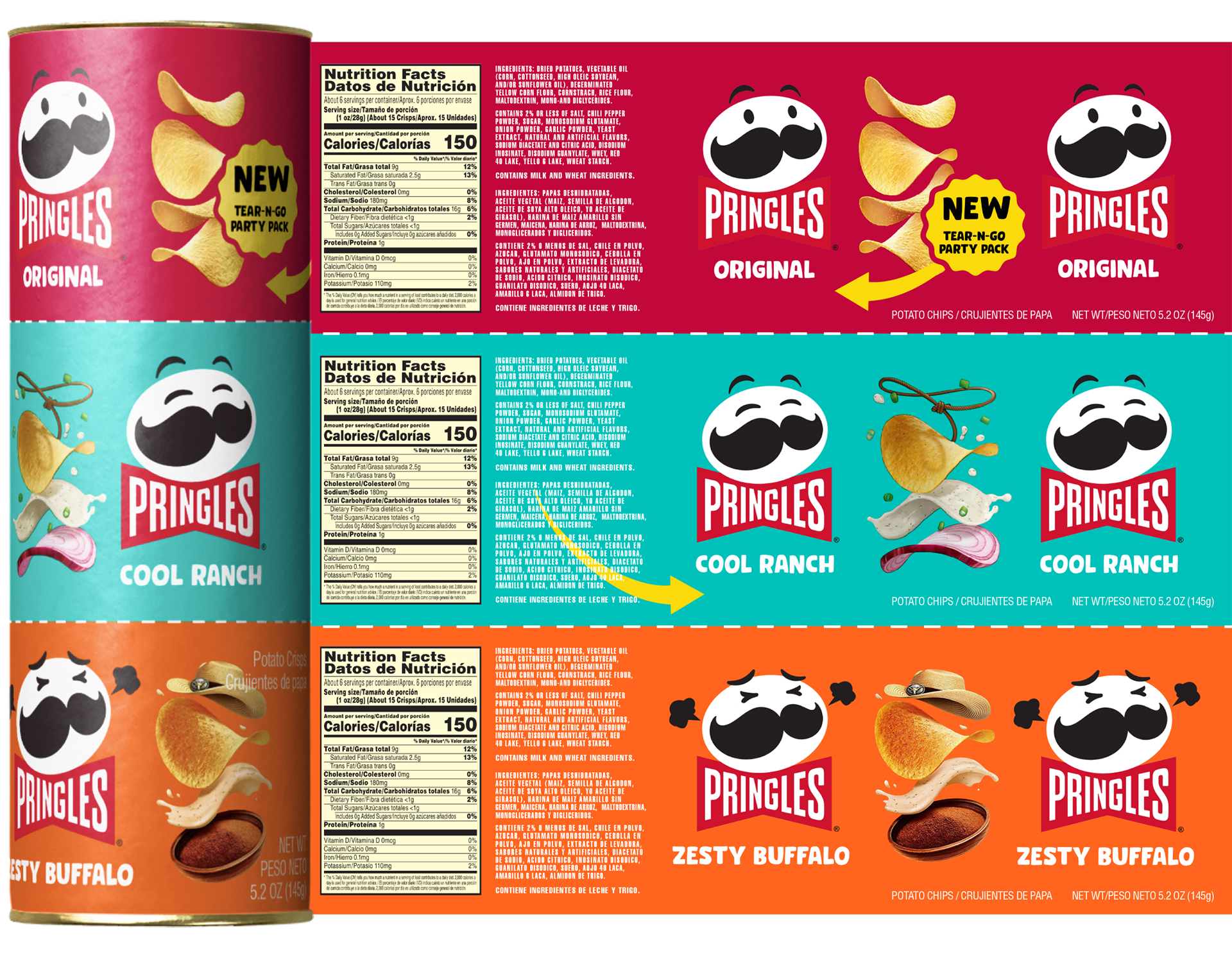
We wanted to keep the new design similar to Pringles® current label, but with an introduction to the new tearaway tube as well as perforation lines to show where to tear.
With both the lid and label ready, we were able to mock up our final idea and create physical prototypes.
Renderings were created using Adobe® Dimension.
Physical prototypes were shot in the classroom by me.
Physical prototypes were shot in the classroom by me.


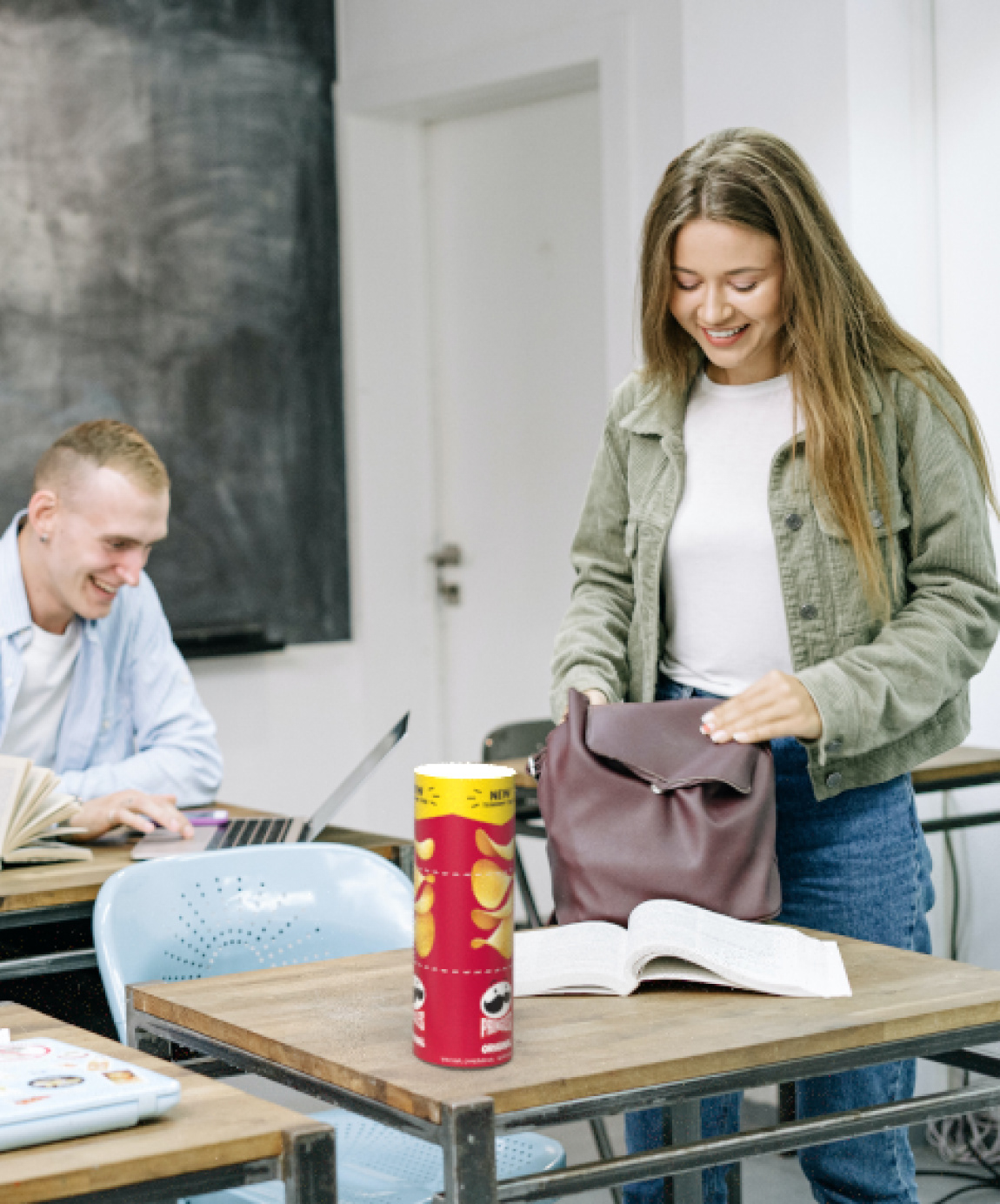
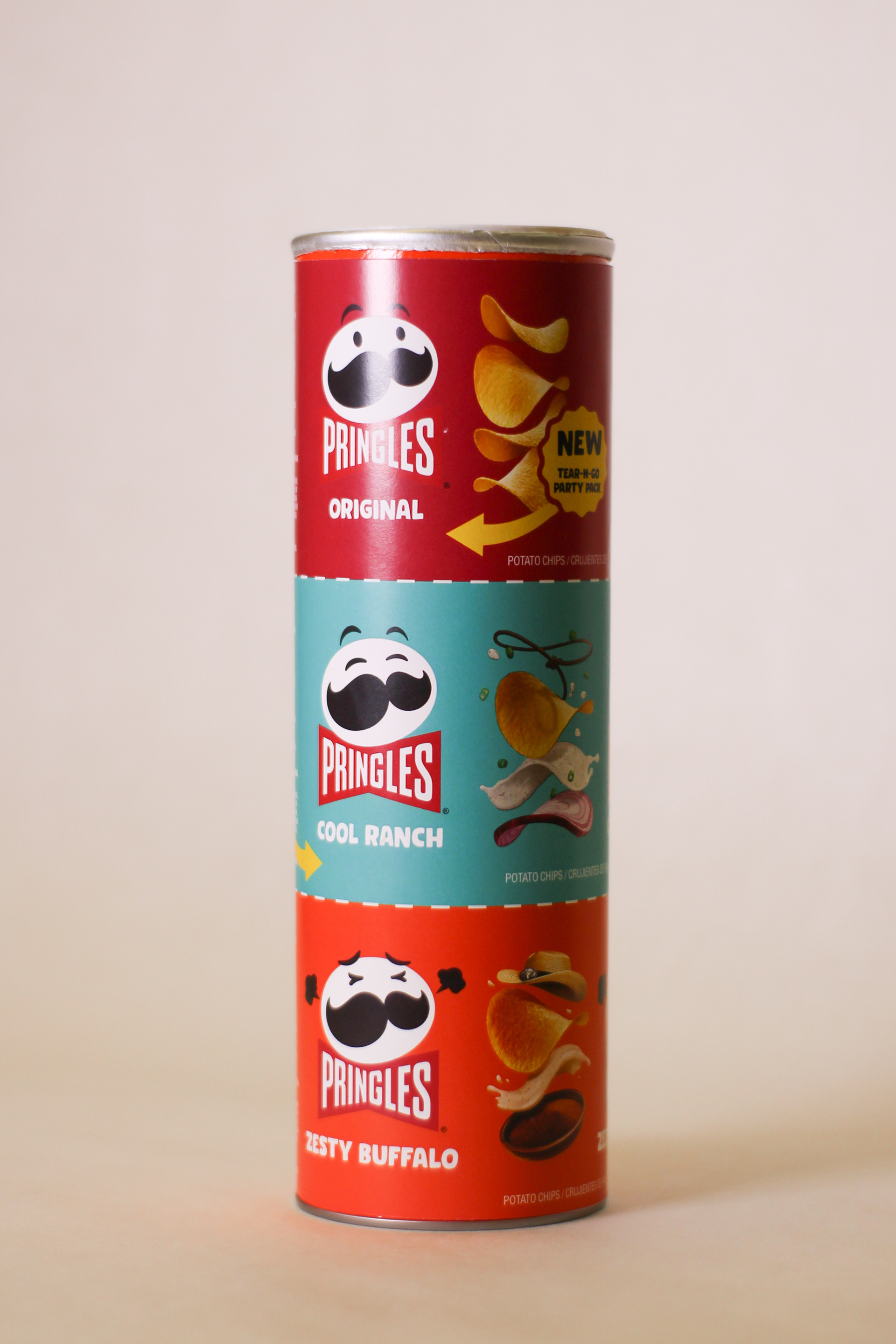
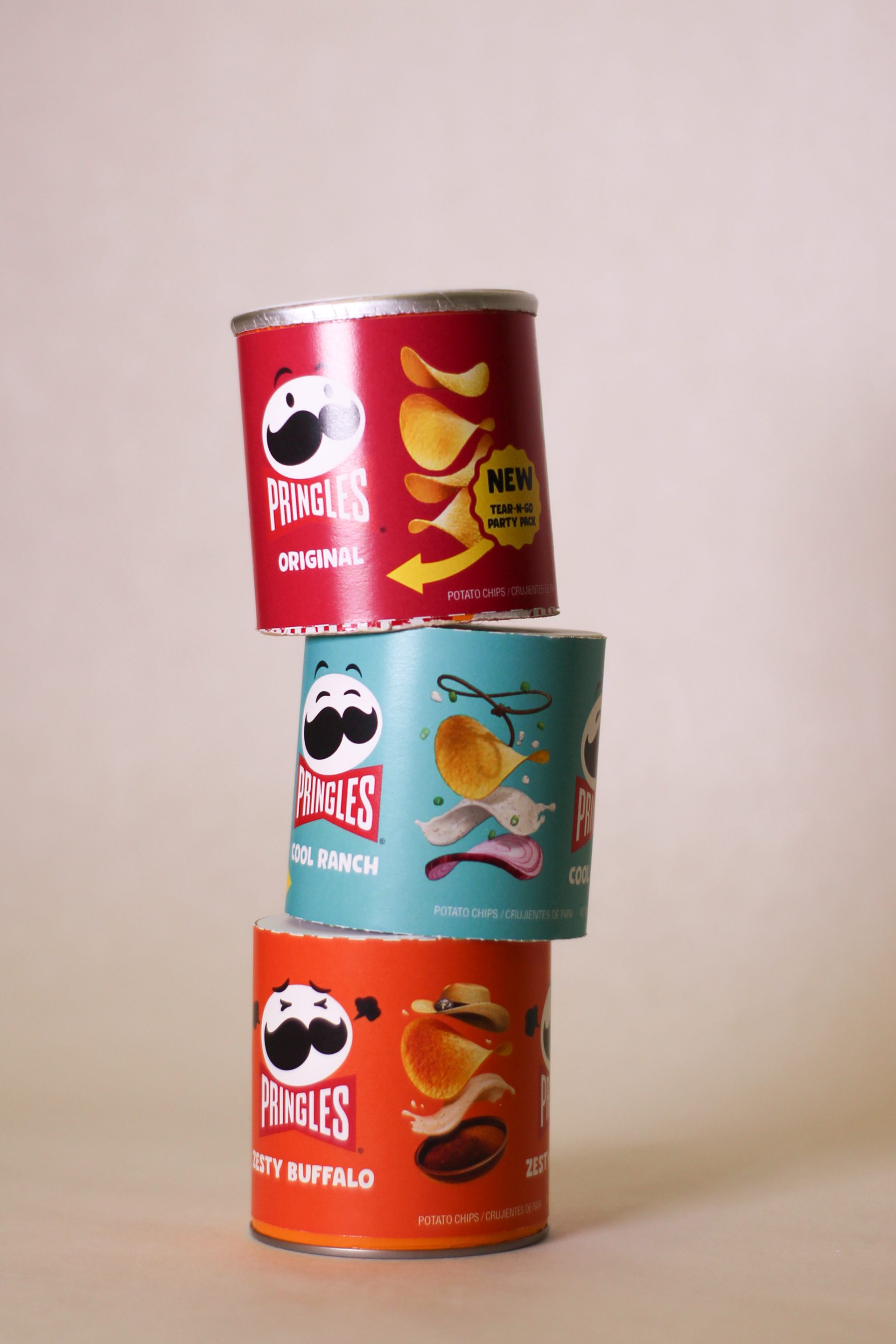
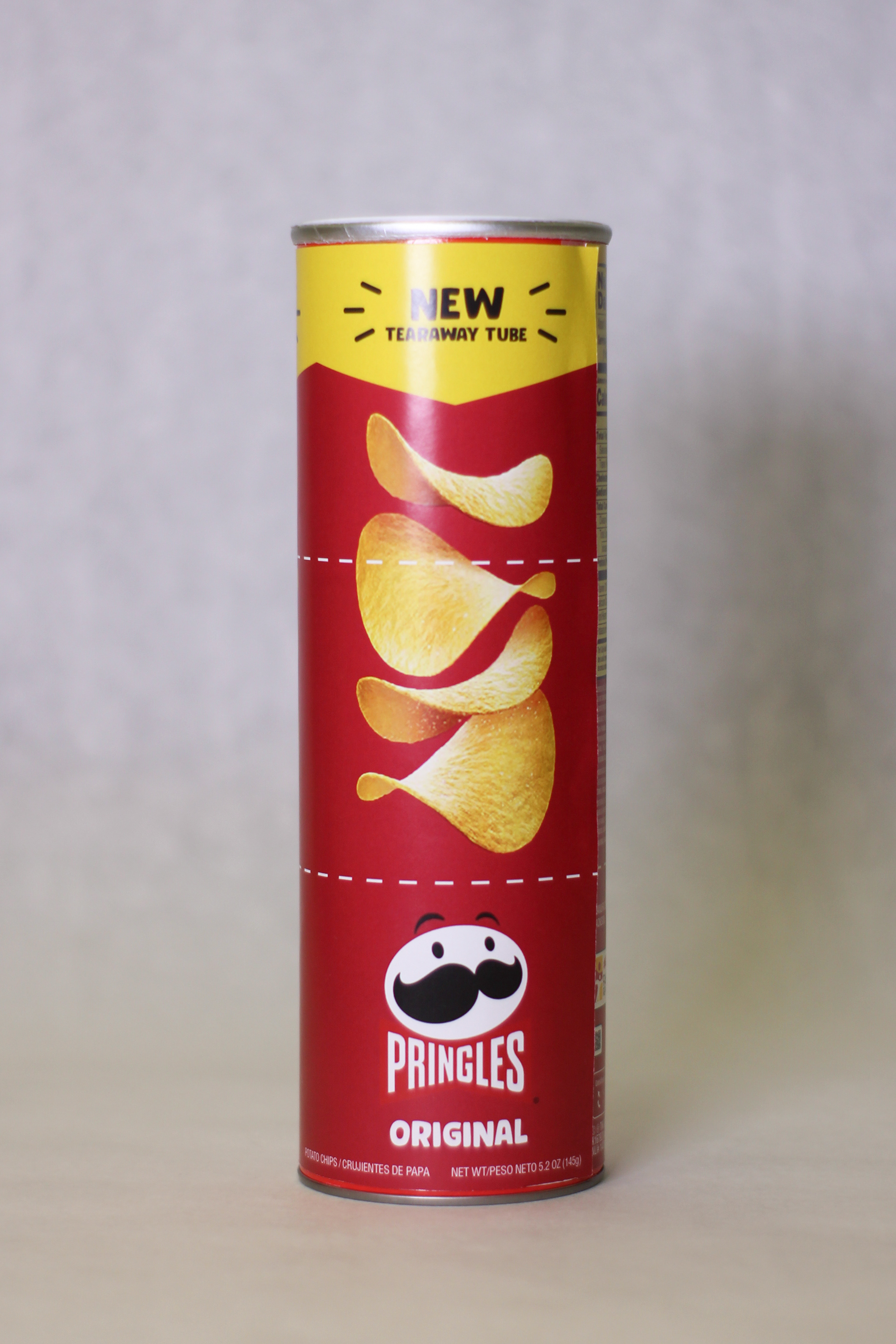
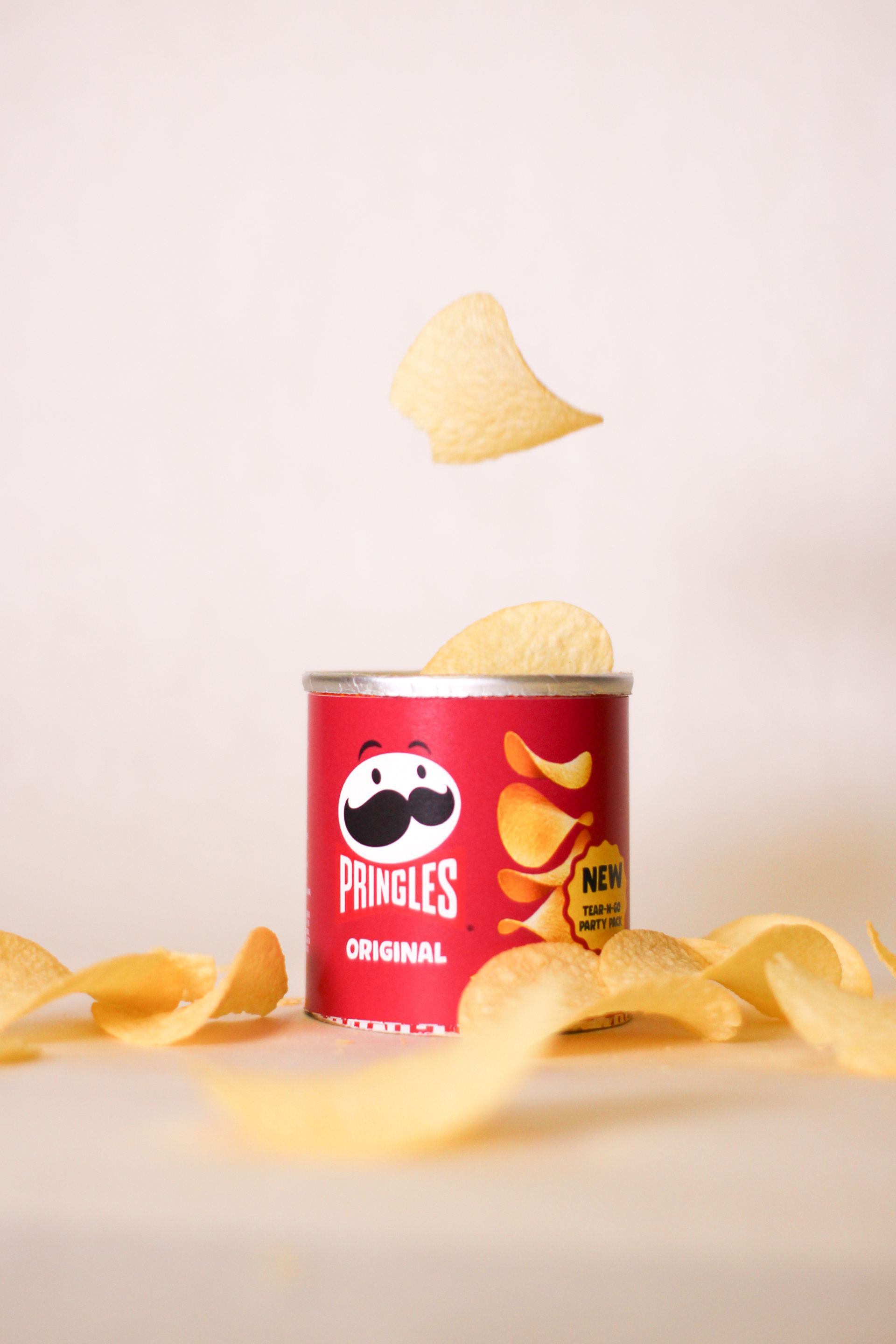
Testing
For the single flavor tube, we cut the Pringles tube into three equal parts, taped them back together using masking tape, wrapped it with a label, and then perforated both the masking tape and the label.
For the three flavor tube, we did the same thing but included a lid and matteboard bottom to each section of the can before taping it back together.
We had colleagues test the physical "pop" of the tube. It was nice to see the perforations worked well and the product torn cleanly and effectively.

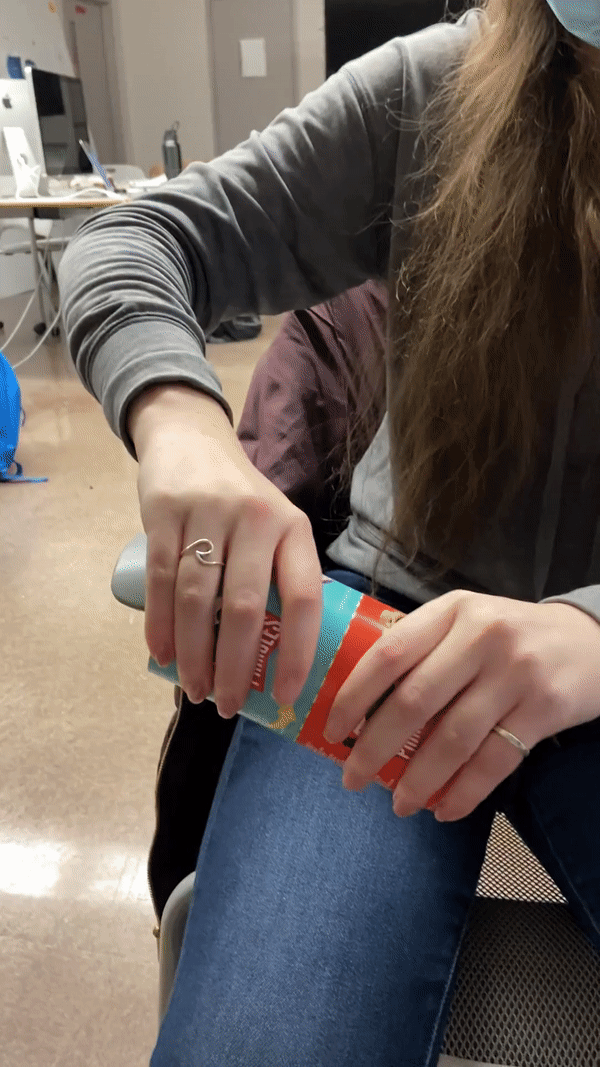
We also took our prototypes to the store where they could be handled by actual users and received lots of positive feedback about our design.
We also had Deb Cascioli, a former product manager for Pringles, take a look at our design:
"That’s a great idea as long as the package would be cost neutral! They really beat up the suppliers to maintain cost, that brand is a huge machine/money maker. Spot on regarding the short cans and negative environmental footprint, they are also slower to run at the plant and slow the entire line down."
Next Steps
In the future, want to look at how we can expand the implementation of this new "tearaway" branding into things such as social media and tv spots.